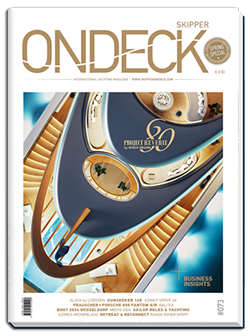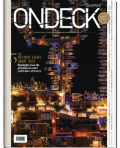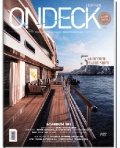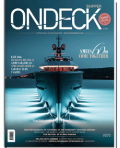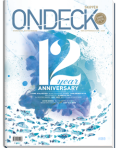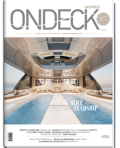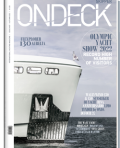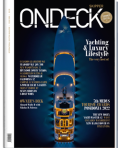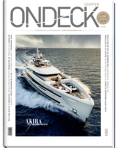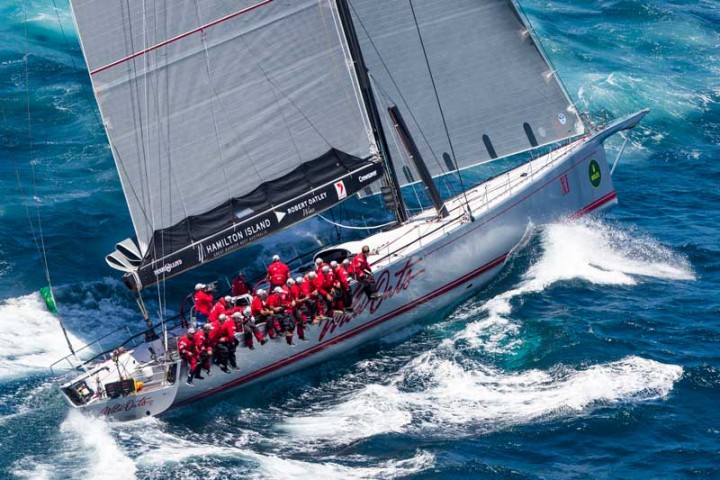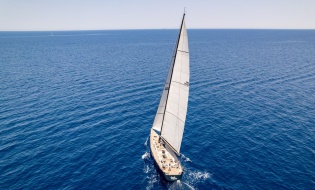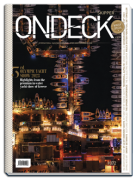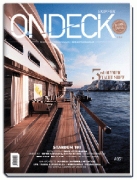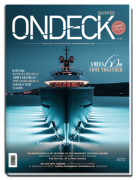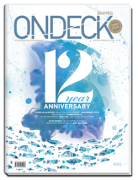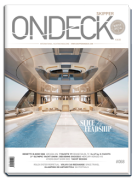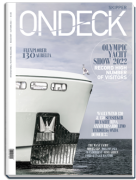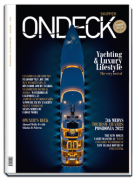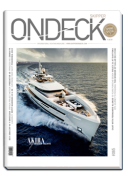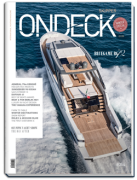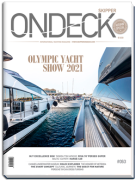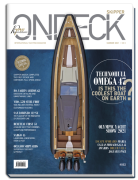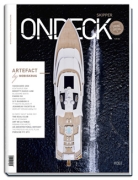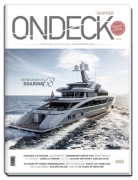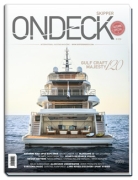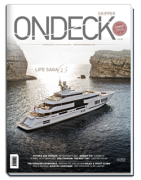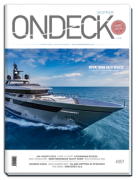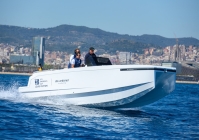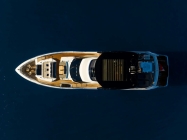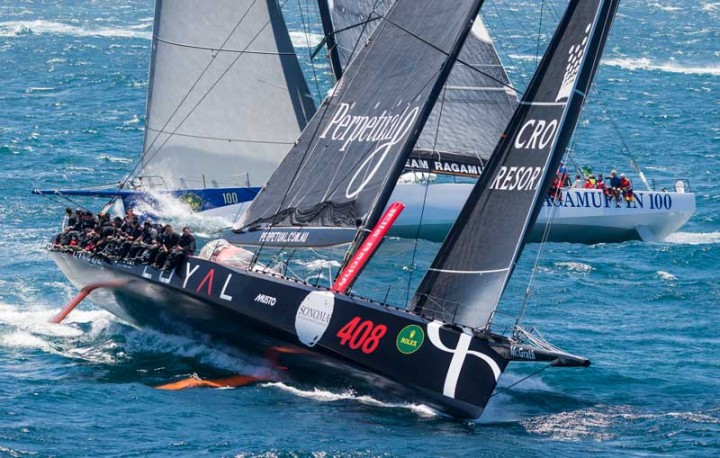
One of the sailing world’s blue ribbon races celebrates its 70th anniversary this year. From its intrepid beginnings back in 1945, the Rolex Sydney Hobart Yacht Race has become one of Australia’s greatest sporting events, an international icon.
Synonymous with achievement, courage, endeavour, pride and sportsmanship over the course of its prodigious history, the race’s unique slot in the international yachting calendar – between Christmas and New Year – has helped to further fuel this legend.
The start of the 2015 Rolex Sydney Hobart, organized by the Cruising Yacht Club of Australia (CYCA) in conjunction with the Royal Yacht Club of Tasmania, will commence at 1300 AEDT on 26 December. The race start is the single most viewed sailing event on the globe as hundreds of thousands of people watch from the festive shores of Sydney Harbour, live on television and over the internet. All of the elements are in place – the 71st edition of Rolex Sydney Hobart is shaping up to be another memorable edition.
The international fleet faces an offshore race stretching 628 nautical miles and finishing at the historic port city of Hobart, Tasmania. The Rolex Sydney Hobart has always been as much about the journey as the destination with the course taking the yachts down the New South Wales coast of the Tasman Sea and across the eastern edge of the Bass Strait, along the Eastern seaboard of Tasmania turning into Storm Bay at Tasman Island for the final leg up the Derwent River to Hobart. Weather and the sea conditions can vary dramatically, are often punishing, and should never be taken for granted.
Rolex has sponsored the competition since 2002 and the Rolex Sydney Hobart is an integral part of its triumvirate of 600 NM offshore classics also comprising the Rolex Fastnet Race (celebrating its 90th anniversary in 2015) and the Rolex Middle Sea Race (dating back to 1968). The values of sportsmanship, adventure, determination, courage and discovery set these offshore races apart from other yacht racing events, and reflect a rigorous sporting ethos that resonates with Rolex’s outstanding reputation for superior quality and performance.
The organising club, the CYCA, has developed into Australia’s leading exponent of ocean racing and now has some 2,700 members.
The Beginnings
Inspired by the Rolex Fastnet Race in the United Kingdom, the Rolex Sydney Hobart was first run in 1945. It has been held every year since, and the rich history of the race is firmly sewn into the fabric of Australian sport and world sailing. Victory in the inaugural edition was claimed by Captain John Illingworth’s 35-ft British boat Rani, one of nine yachts to compete. It was a vastly different era: in the post-war years materials were scarce and rudimentary. Safety measures were minimal, navigation was by sextant and compass, and some crews still did not possess functioning radios, therefore remaining ignorant of weather reports and warnings.
When Rani arrived in Hobart on the evening of New Year’s Day, her crew had no idea of her position in relation to the rest of the fleet. Assuming his boat was last to arrive, Illingworth was astounded to learn that Rani, the second smallest entrant, had beaten the competition as fastest finisher. Rani also proved to be the race’s overall winner, and, as the first recipients of the prestigious Tattersall’s Cup, both owner and yacht have become two of the event’s legendary characters.
The world has changed considerably since that first race. Advances in technology have led to lighter, faster boats, better sails and handling systems, and weather reports are readily available, along with data aiding navigation and race tactics. Even so, the Corinthian spirit inspired by the race’s founders and the joy at having successfully completed the 628-nm course remain compelling features of the race.
Overcoming challenges and pushing boundaries define the Rolex Sydney Hobart’s as a classic. For most crews, the chances of winning are extremely low. The attraction lies in the many variables of racing 628 nautical miles, the exhilaration and the sense of accomplishment at the finish. The race has earned a fearsome reputation, due in part to the route passing through some of the toughest open waters on the planet. In 1998, a severe storm, similar in strength to a low-class hurricane, led to the sinking of five yachts and the deaths of six sailors in the Bass Strait. The response of the organizers was proactive: new safety measures and regulations were introduced immediately after the disaster.
The Legend
Throughout the years the race has attracted politicians, business tycoons, sporting legends and the elite of sailing talent. Notable recipients of the Tattersall’s Cup include British statesman Sir Edward Heath with Morning Cloud in 1969, and media mogul Ted Turner aboard American Eagle in 1972. No crew has successfully defended the Tattersall’s Cup since Freya, owned by the Halvorsen brothers, triumphed three times in a row in the 1960s.
Last year’s fastest boat and winner of line honours was Australian Bob Oatley’s Wild Oats XI, the imperious 100-ft racing yacht skippered by Mark Richards. In 2012, Wild Oats XI made history by securing the triple-crown for a second time: finishing first, she narrowly beat her own race record and set a new benchmark of 1 day, 18 hours, 23 minutes and 12 seconds, while also claiming the Tattersall’s Cup as overall race winner. Although the race record was not broken in 2014, Wild Oats XI made history by securing a record eighth line honours victory, surpassing the number of victories achieved by Morna (later Kurrewa IV) in the 1960s.
The first boat to finish the Rolex Sydney Hobart always receives a rapturous welcome in Hobart. Famous international winners include American business giant Larry Ellison with Sayonara in 1995 and 1998; French sailing legend Eric Tabarly and Pen Duick II in 1967; and German entrepreneur Hasso Plattner and Morning Glory in 1996.
For most of the fleet, the main target remains overall victory on handicap and the coveted Tattersall’s Cup. In theory, any boathas a chance at victory, demonstrated by recent wins by yachts measuring from 43-ft (Wild Rose, 2014) through 60-ft (Loki, 2011), to 100-ft (Wild Oats XI, 2012). Owing to its rich run of success at the event, Wild Oats XI will start as favourite for line honours in 2015. However, she is sure to face stiff competition from other 100-ft rivals. In recent years the likes of Anthony Bell’s Perpetual Loyal (AUS) and Jim Clark’s Comanche (USA) have proved to be stern opponents.
EVENT PROGRAMME
Thursday, 24 December
Race Briefing(s)
Saturday, 26 December
Weather Briefing
13:00 Race Start
From Monday, 28 December
Arrival of the first boats in Hobart
Time to beat race record: 07:23.12
Friday, 1 January
Final prize giving, Royal Yacht Club of Tasmania (RYCT)
* All times listed are AEDT (AEDT – Australian Eastern Daylight)











